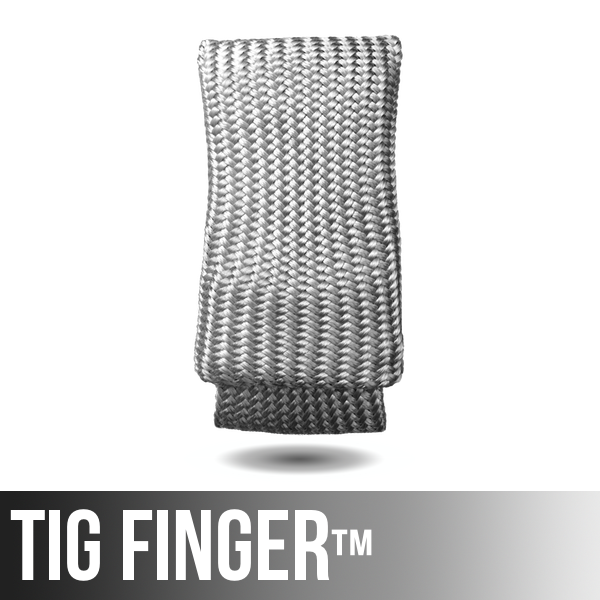Video Transcript
Mig Welding Pipe Roots
Hey. Jody here with weldingtipsandtricks.com. I’m taking a little breather from the how to TIG weld aluminum series. I’m still working on that and next up should be AC frequency adjustment. But today, doing a little bit of MIG welding using a positioner that I bought used on eBay not too long ago at JD’s shop. Let’s do it.
This is a Ridgid portable pipe beveler and it is really nice. It does throw some nice, hot little metal shards, so you’ve got to stay out of the way of it, but you can bevel a piece of pipe like this in, I don’t know, 45 seconds or less. It is really nice. It puts a really nice, consistent 37 1/2 degree bevel on it. You can also go other angles, but you’ll see right here, that’s a nice, clean, consistent bevel.
I’m not going to do much else to it and we’re going to put about a 5/32, just a loose 1/8 gap in here. Put some tack welds on this thing, feather the tacks with a grinder. That’s kind of part of the gig when you’re doing something like this. You’ve got to get those tacks feathered. And when I say “feathered,” just thinned out on the ends so that you can tie into one or come off of one and have everything melt, nice and clean.
This is a little prop stand from an Instagrammer called @hour.glass_ingenuity. Now these little stands like this come in really handy, not only for positioner welds, but just if you’re making a little bit of a long run on the bench, it gives you something to prop and glide your hand on. I’ll put his email in the description box of the YouTube video in case you’re interested.
18 volts, 230 inches a minute using 030 diameter wire. That’s roughly .8 mm diameter wire. See JD is dialing the travel speed in on this one just by hand while he welds a little bit. You can see the prop there, it’s going to come in really handy.
When you’ve got a nice, clean bevel, clean bright metal, no mill scale or anything with that gap like this and hardly any land it just works really well for downhill. Now, I don’t downhill just any and everything, but this is one application where it works really well. It’s very common practice in pipe fabrication shops to do this and there’s even special processes from Miller and Lincoln for doing this kind of thing.
How did I come upon the settings of 18 volts and 230 inches per minute? A few weeks ago I did this video where I set up a little plate. Same bevel, loose 1/8 gap and whatever you figure works on plate like this, works on pipe just fine too.
I went ahead and did a quick cut and polish and etch on that root pass, just to see that there was no cold lap or lack of fusion in it and it did really well.
Anytime I do a video going downhill with MIG generates lots of discussion. A lot of people think you should never go downhill with MIG, but if you’re welding say 18 gauge steel, obviously you’re going to go downhill. So there is a point, there is a cut off. I think the cut off is around 1/8 of an inch where you can safely go downhill, even if you have to weld over some mill scale. I think 3/16 and thicker, you need to start thinking about going up hill. That’s my take on it anyway.
Here’s an example of why I say that.
I’m going to do a little 1/8 inch thick, that’s 3.2 mm thick lap joint downhill. This is hot rolled material, got the mill scale coating still on it. I didn’t do any special cleaning. It’s also got a little bit of a curled lip from being sheared. You can see I’m doing this little sort of loop technique to stay up at the front of the puddle and I’m going to do a little cut, polish and etch on this too. And that got in there pretty good, even through that mill scale coating. Again, it’s only 1/8 of an inch thick.
JD just wrapped up a hand rail job and he had some left over pipe and fittings so we thought we would spin a few of those out here. Now, this is how I determine position or speed to get in the ballpark. I use some painters tape or something like that. I mark in 1/8 of an inch increments and somewhere between 1/8 and 1/4 of an inch per second will get you right into the ball park for MIG. 1/8 of an inch for TIG, closer to 1/4 of an inch for MIG like this.
So going again gap it roughly 1/8 of an inch, get a tack on there and then do the whole torpedo level thing and make sure to get it straight. And then just downhill it out from there. Same settings again, 18 volts, 230 inches a minute and that’s pretty warm here. I think we could dial down the voltage here just a little bit and wind up with a better overall product because the goal here would be to pretty much have it above flush so there’s minimal finishing to be done if these were to be sanded and blended smooth.
But it did get full penetration, just a little low on the surface. Will take very little clean up, but that would have been a good joint.
Let’s talk about problems with welding downhill. This is a clip from a previous video. Here’s some 1/4 inch hot rolled with the mill scale left intact, set up a lot hotter. 20 1/2 volts, 330 inches a minute using .035 wire. Looks like it’s really burning in there, but it’s just not. Look at all that lack of fusion there. Metal just, even though I had it set up good and hot, the metal just didn’t even get through that mill scale.
Here’s a different example here going uphill with the metal clean, using only a 115 volt MUG welder and CO2 gas and you can just kind of even see that that’s just cutting in there pretty well. Remember on the right is only 1/8 of an inch thick. The doubler is 1/4 inch. That’s just what I had on hand. This is a little repair on an engine stand, engine hoist that is.
But big difference between uphill and downhill is all I’m saying and there is a cut off. I think that cut off is about 3/16 of an inch. That’s where I’d start going uphill with a short circuit MIG.
Now this all changes if you’re doing spray arc and things like that, but I’m strictly talking about short circuit MIG welding here.
I hope this information helped somebody. Again, the way I support these videos is through my online store at weldmonger.com. I’d be very happy if you’d pay it a visit. Thank you very much and we’ll see you next time.







Leave a Reply